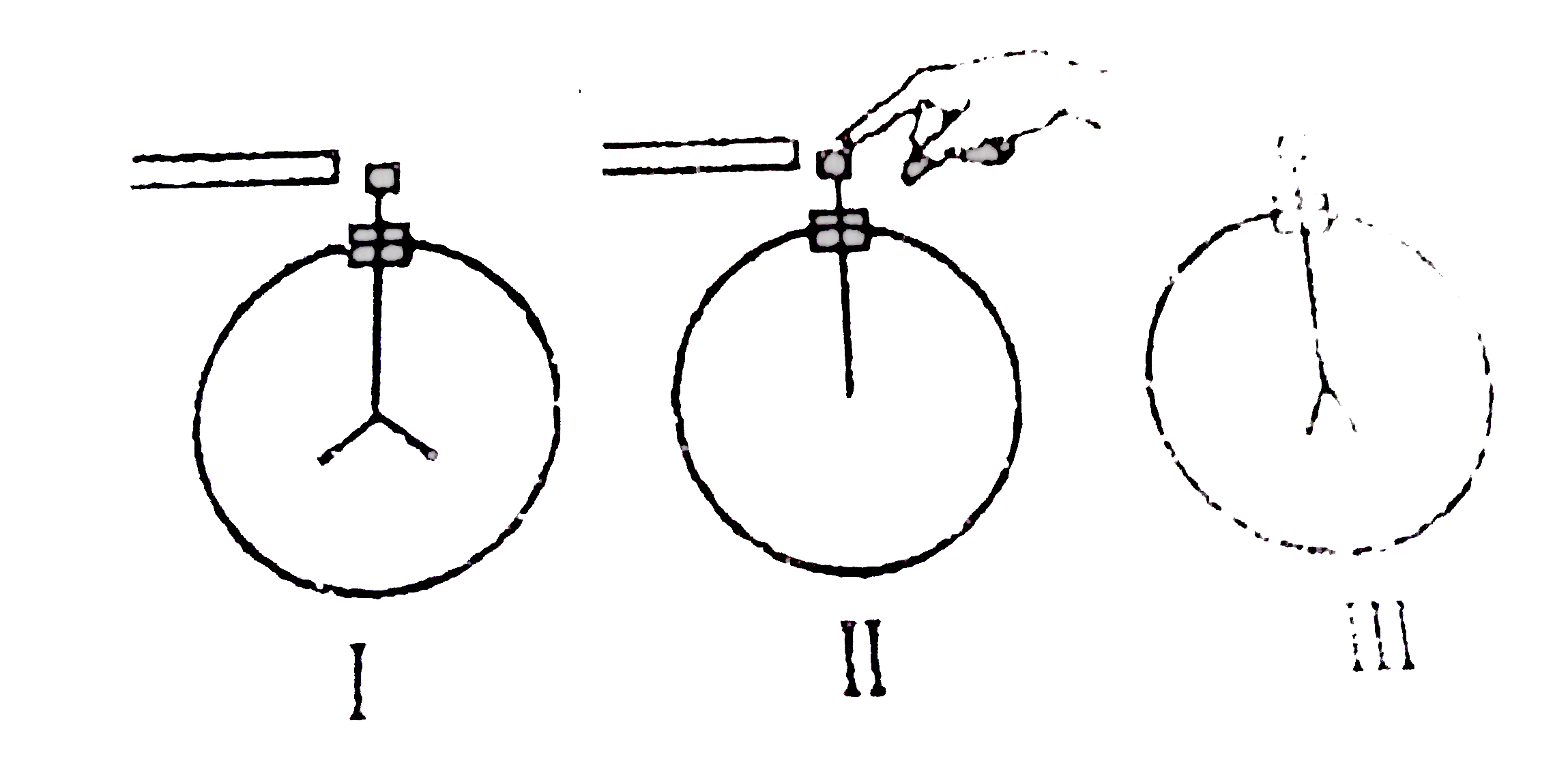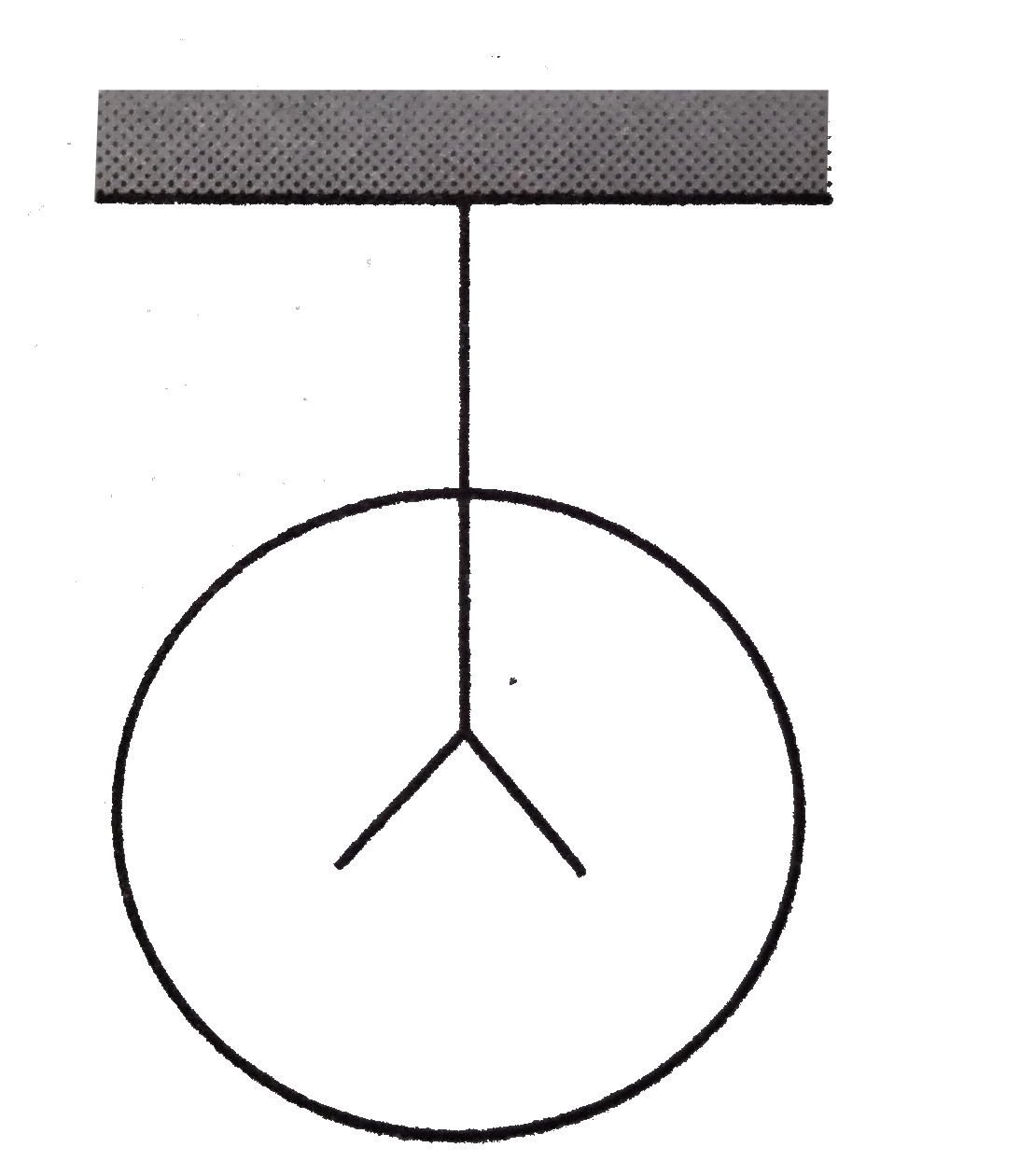if a charged body is brought near a charged electroscope, then
The leaves will further diverge the charge on he body is opposite to that on the eletroscope
The leaves will converge, if the charge on the body is opposite to that on the electroscope
The leaves will further diverge if the charge on the body is similar to that on the electroscope
Both (2) and (3)
The correct Answer is:D
To solve the question, "If a charged body is brought near a charged electroscope, then what happens?", we will analyze the situation step by step.
Step 1: Understanding the Electroscope
An electroscope is a device that detects electric charge. It consists of a metal rod connected to two thin metal leaves (often made of gold). When the electroscope is charged, the leaves repel each other due to the like charges.
Hint: Remember that like charges repel and opposite charges attract.
Step 2: Initial Condition
Let’s assume the electroscope is positively charged. This means that both leaves of the electroscope have a positive charge and are repelling each other, causing them to diverge.
Hint: Visualize the electroscope with its leaves diverging due to the positive charge.
Step 3: Bringing a Charged Body Near the Electroscope
When we bring another charged body near the electroscope (without touching it), the effect depends on the nature of the charge on the body.
Hint: Consider the charge of the body being either positive or negative.
Step 4: Case 1 - Opposite Charge (Negative Charge)
If the charged body is negatively charged, it will attract the positive charges in the electroscope. This attraction causes some of the positive charges in the leaves to move upward toward the rod, reducing the amount of positive charge on the leaves.
- Result: The leaves will not diverge further; they may even converge slightly due to the reduction of like charges.
Hint: Think about how attraction affects the distribution of charges in the electroscope.
Step 5: Case 2 - Same Charge (Positive Charge)
If the charged body is positively charged, it will repel the positive charges in the electroscope. This will cause more positive charge to accumulate on the leaves, increasing the repulsion between them.
- Result: The leaves will diverge further.
Hint: Visualize how the repulsion of like charges increases the divergence of the leaves.
Step 6: Conclusion
Based on the analysis:
1. If the charged body is opposite (negative), the leaves will not diverge further (they may converge).
2. If the charged body is the same (positive), the leaves will diverge further.
Thus, the correct options are:
- The leaves will converge if the charge on the body is opposite to that of the electroscope (Correct).
- The leaves will further diverge if the charge on the body is similar to that of the electroscope (Correct).
Final Answer: The correct options are 2 and 3.
An electroscope is a device that detects electric charge. It consists of a metal rod connected to two thin metal leaves (often made of gold). When the electroscope is charged, the leaves repel each other due to the like charges.
Let’s assume the electroscope is positively charged. This means that both leaves of the electroscope have a positive charge and are repelling each other, causing them to diverge.
When we bring another charged body near the electroscope (without touching it), the effect depends on the nature of the charge on the body.
If the charged body is negatively charged, it will attract the positive charges in the electroscope. This attraction causes some of the positive charges in the leaves to move upward toward the rod, reducing the amount of positive charge on the leaves.
If the charged body is positively charged, it will repel the positive charges in the electroscope. This will cause more positive charge to accumulate on the leaves, increasing the repulsion between them.
Based on the analysis:
1. If the charged body is opposite (negative), the leaves will not diverge further (they may converge).
2. If the charged body is the same (positive), the leaves will diverge further.
- The leaves will converge if the charge on the body is opposite to that of the electroscope (Correct).
- The leaves will further diverge if the charge on the body is similar to that of the electroscope (Correct).
Topper's Solved these Questions
Similar Questions
What will happen to the leaves of an electroscope if a positively charged body is brought near
(a) An uncharged electroscope ?
(b) A positively charged electroscope ?
( c ) A negatively charged electroscope ?
View SolutionWhen a negatively charged ebonite rod is brought close to an uncharged electroscope, the leaves of the electroscope develop positive charge and diverge.
View SolutionA positively charged body is brought near to bob of an uncharged gold leaf electroscope , then :
View SolutionWhen a charged rod is brought near small bits of paper, the small bits will
View SolutionTo charge an electroscope positive, a .......................(positively/negatively) charged glass rod is brought in contact with the uncharged electroscope.
View SolutionWhen a negative charged rod is brought near, but does not touch, the initially unchanged electroscope shown below, the leaves spring apart (I). When the electroscope is then touched with a finger, the leaves collapse (II). When next the finger and finally the rod are removed, the leaves spring apart a second time (III). The charge on the leaves is

View SolutionA positive point charge Q is brought near an isolated metal cube then what will happen to the charge of cube?
View SolutionWhen a charged comb is brought near a small piece of paper, it attracts the piece. Does the paper, it attracts the piece. Does the paper become charged when the conb is brought near it ?
View SolutionAn electroscope is given a positive charge, causing its foil leaves to separate. When an object is brought near the top plate of the electroscope, the fiols separated even further. We conclude.

View SolutionA positive point charge q is brought near a neutral metal sphere.
View Solution
